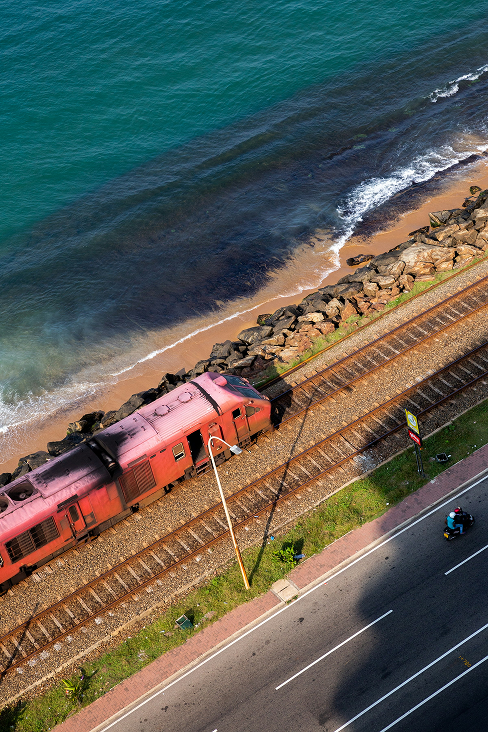
After several years of fiscal stabilization and structural reform under IMF guidance, this budget signals something different, a transition from survival to momentum, from stability to growth, and from macro-correction to market creation.
The budget is not framed as an austerity exercise. It is, instead, a strategic recalibration of the economy, one that positions the private sector at the center of national renewal. Its underlying philosophy is that economic growth will not be driven by state spending alone, but by partnerships, productivity, and participation across multiple sectors.
With GDP growth forecast to exceed 5% in 2025 and a debt-to-GDP ratio expected to fall below 95% by 2026, Sri Lanka is reclaiming economic credibility. But what truly stands out is the budget’s narrative direction: it champions digitalization, sustainability, energy transition, SME empowerment, and export diversification. It sets the foundation for an integrated growth model where energy, transport, digital, and industrial ecosystems intersect to create compounding opportunities.
At Cyaniq, we view this as a turning point for the country’s business landscape, one that presents multi-sector opportunities for both local and global players. The following analysis highlights where these opportunities lie, why they matter, and how strategic organizations can position themselves to capture emerging value in Sri Lanka’s next growth cycle.

Few sectors reflect the government’s long-term intent as clearly as the energy sector. The 2026 Budget embeds energy at the heart of Sri Lanka’s development agenda, not merely as a utility, but as an enabler of competitiveness and sustainability.
The energy transition is not a single-sector transformation; it is an industrial multiplier industrial multiplier. As renewable capacity expands and transmission becomes digital, downstream industries; manufacturing, logistics, agriculture, tourism will all benefit from lower costs and greater reliability. Businesses that align early with the green infrastructure wave can expect compounding returns across value chains.
Infrastructure is both the physical and psychological signal of growth. After years of constrained capital expenditure, the 2026 Budget allocates increased investment toward highways, public transport, and logistics infrastructure, signaling the return of development ambition.
Infrastructure growth is now multi-modal and multi-sectoral. The new wave of infrastructure is not just about concrete, it’s about connectivity, efficiency, and smart integration. Businesses that operate at the intersection of physical infrastructure and digital intelligence will shape the country’s next logistics revolution.
The budget positions digitalization as the bloodstream of the modern economy. It goes beyond e-government rhetoric to place digital transformation at the core of revenue systems, logistics, education, and industry.
Digitalization is the invisible infrastructure that will define competitiveness across every industry. The businesses that thrive will be those that use data to create differentiation, transforming from service providers to intelligence providers.


The budget positions digitalization as the bloodstream of the modern economy. It goes beyond e-government rhetoric to place digital transformation at the core of revenue systems, logistics, education, and industry.
Digitalization is the invisible infrastructure that will define competitiveness across every industry. The businesses that thrive will be those that use data to create differentiation, transforming from service providers to intelligence providers.
While renewables define the future, hydrocarbons continue to play a stabilizing role in Sri Lanka’s near-term energy matrix. The budget reflects a pragmatic balance, continuing support for petroleum and LNG projects while enabling private participation through reform.
PPPs for Sapugaskanda Refinery Modernization and Kerawalapitiya LNG Power Plants.
Continuation of cost-reflective pricing to improve financial discipline and open space for private partnerships.
Integration of refinery upgrades with port logistics and energy-hub development in Trincomalee and Hambantota.
3, Gas Distribution & Infrastructure: LNG regasification, distribution networks, and downstream gas service models.
In an energy-transition era, the hydrocarbon sector presents bridging opportunities. For investors, the value lies not in fuel itself, but in infrastructure, pipelines, logistics, and refining capacity that can be leveraged for cleaner fuels in the future.
One of the most inclusive aspects of the budget is its commitment to SME empowerment and regional equity. The government recognizes that sustainable growth requires participation beyond Colombo and traditional industrial hubs.
Investment threshold for incentives lowered from USD 3 million to USD 250,000.
Consolidation of IDB, NEDA, and SEDA under a single SME authority for efficiency and access.
Targeted subsidies and concessional loans for small businesses and agriculture-linked enterprises.
Focus on regional industrial parks, “auxiliary zones,” and rural digital inclusion.
SME growth is where inclusive economic expansion meets innovation. The next wave of entrepreneurship will emerge from the provinces, supported by digital tools, decentralized infrastructure, and targeted state support.
While not headline-grabbing, the tourism sector remains central to Sri Lanka’s foreign-exchange and employment agenda.
Infrastructure upgrades (airports, highways, and ports) improve access to tourism regions.
Renewed emphasis on the blue economy, coastal and marine tourism linked to environmental sustainability.
Proposed Investment Protection Act to encourage FDI in hospitality and experience-based ventures.
Tourism’s evolution from “visitation” to “experience economy” is accelerating. The opportunity lies in story-driven, sustainable experiences that blend Sri Lanka’s natural assets with digital marketing and global wellness trends.
The 2026 Budget is more than a fiscal statement, it is an economic manifesto for transformation. It redefines the relationship between the public and private sectors, embeds transparency in governance, and creates a platform for innovation, digitalization, and sustainability.
For business leaders, the signals are clear:
Policy stability is back. Fiscal discipline under IMF oversight restores confidence.
The private sector is central. PPPs, investment protection, and reduced thresholds democratize opportunity.
Integration is the new growth model. Energy, transport, and digital sectors are designed to converge.
Sustainability is no longer optional. Every major investment direction from energy to tourism is aligned with green and digital transitions.
We believe the winners in this next growth phase will not merely follow the opportunities, they will architect them. By aligning strategy to the national growth logic, by innovating at the intersections of technology and sustainability, and by embedding purpose within profitability, Sri Lankan enterprises can redefine their competitive frontier.
The 2026 Budget lays the groundwork. The next move belongs to the changemakers.


| Article Section | Primary Sources | Supporting Analyses | Media / Institutional Context |
|---|---|---|---|
| Introduction & Macro Direction | Ministry of Finance Budget Speech 2026; Sri Lanka Budget 2026 – Key Insights | Deloitte Sri Lanka; KPMG Sri Lanka | Daily Mirror; EconomyNext; Ceylon Chamber |
| Energy & Power | Ministry of Finance Budget Speech 2026 | Deloitte Sri Lanka; KPMG Sri Lanka | Newswire.lk; news.lk; EconomyNext |
| Infrastructure & Transport | Ministry of Finance Budget Speech 2026 | Deloitte Sri Lanka; KPMG Sri Lanka | Daily Mirror; Newswire.lk |
| Infrastructure & Transport | Ministry of Finance Budget Speech 2026 | Deloitte Sri Lanka; KPMG Sri Lanka | EconomyNext; Newswire.lk |
| Manufacturing & Export Diversification | Ministry of Finance Budget Speech 2026 | Deloitte Sri Lanka; KPMG Sri Lanka | EconomyNext; Ceylon Chamber |
| Oil, Refining & Petrochemicals | Ministry of Finance Budget Speech 2026 | Deloitte Sri Lanka; KPMG Sri Lanka | Reuters; EconomyNext |
| SME, Regional & Community Development | Ministry of Finance Budget Speech 2026 | Deloitte Sri Lanka; KPMG Sri Lanka | Newswire.lk |
| SME, Regional & Community Development | Ministry of Finance Budget Speech 2026 | KPMG Sri Lanka | Newswire.lk |
Cyaniq designs go-to-market systems that convert market complexity into competitive clarity. Grounded in customer demand, competitive dynamics, and commercial economics, our consulting approach pinpoints opportunity gaps, challenges friction, and defines the most direct path to value capture.
Level 2, No. 301A 1/1,
Galle Road, Colombo 03,
Western Province, Sri Lanka
1st Floor, 46, 1/1 Narahenpita -
Nawala Rd, Colombo 11222.
Colombo 05, Sri Lanka.